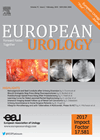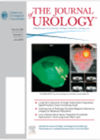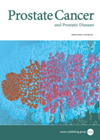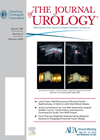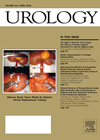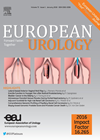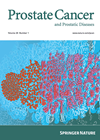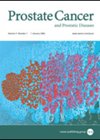
Journal Reviews
Dilemma of second primary tumour
Long-term survival in localised prostate cancer (CaP) can be achieved with treatment by either radical prostatectomy (RP) or external beam radiotherapy (EBRT). The development of second primary tumour is poorly understood in such cases. This retrospective study included 84,397 cases...
Serum cholesterol and risk of high-grade prostate cancer: results from the REDUCE study
This study examined a cohort of non-statin using patients who participated in the REDUCE study. The REDUCE study included men who had an elevated prostate specific antigen (PSA) and a negative baseline prostate biopsy who then underwent year two and...
Comparison of pathological stage in patients treated with and without neoadjuvant chemotherapy for high-risk UTUC
High-risk upper tract urothelial carcinoma (UTUC) has been associated with poor survival outcomes. The authors evaluated the role of neoadjuvant chemotherapy in high-risk cases prior to radical nephroureterectomy (RNU) in terms of pathological stage of the final surgical specimen. A...
Indication to pelvic lymph nodes dissection for prostate cancer
This paper explored the role of multiparametric MRI (mpMRI) in predicting the likelihood of lymph node invasion in patients with a risk of <5% according to the Briganti nomogram. Three hundred and ten patients who underwent a preoperative mpMRI and...
Local tumour bed recurrence following partial nephrectomy
In this interesting retrospective study, the authors looked at the incidence of local tumour bed recurrence after partial nephrectomy (PN), the factors associated with that, and the management. A total of 2,271 patients’ charts were reviewed who underwent partial nephrectomies...
Upper pole access is safe and effective for paediatric percutaneous nephrolithotomy
Upper pole access for percutaneous nephrolithotomy (PCNL) provides a straight access tract to the ureter with easier placement of a guidewire, good exposure of the pelvis and upper ureter, and comfortable manipulations for the treatment of staghorn, large upper caliceal,...
Characteristics of testicular tumours in prepubertal children
It is well known that testicular tumours in children occur in one of two peaks. Firstly, in the first four years of life where a third to half of these tumours are benign and secondly during puberty where there is...
Testicular prostheses satisfaction
This is a satisfaction survey in 40 patients who had underwent radical orchidectomy and had saline filled testicular prosthesis (TP) over a 3 year period in US, as the silicone implants are not in use since 1995 in US. No...
The risk of tumour recurrence in patients undergoing renal transplantation for end-stage renal disease
End stage renal disease (ESRD) patients in need of a kidney transplant who have a previous history of urological cancer should undergo a cancer-free waiting period before receiving a kidney transplant. Currently the recommended waiting time is based on the...
The survival impact of neoadjuvant hormonal therapy before radical prostatectomy
There is increasing evidence for the role of radical prostatectomy in select patients with T3-T4 prostate cancer (as part of multimodal therapy). This retrospective multicentre study explored the benefit of neoadjuvant hormonal therapy before radical prostatectomy specifically in patients with...
Bladder cancer outcomes in patients with spina bifida
These authors carried out a systematic review using PubMed and a number of terms to pick up studies with an underlying diagnosis of myelomeningocele and bladder cancer, with exclusions of cord injury, tuberculosis, schistosomiasis, or prior ureterosigmoidostomy. Their aim was...
Prostate cancer detection rate of MRI-TRUS fusion vs. systematic biopsy
With the advent of one-stop prostate cancer diagnostic clinics, the findings of this study are of interest to readers who may be considering introducing the technique of magnetic resonance imaging transrectal ultrasound (MRI-TRUS) fusion biopsies to their practice. A retrospective...

